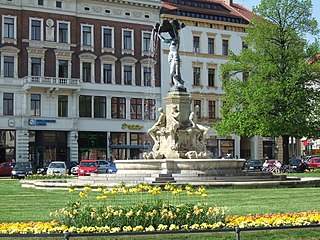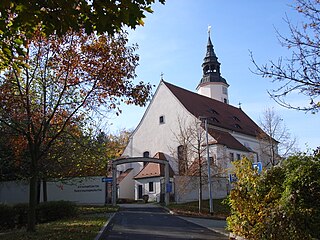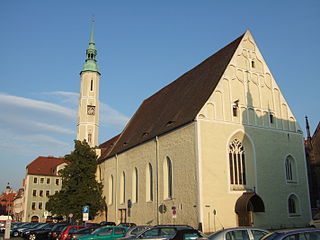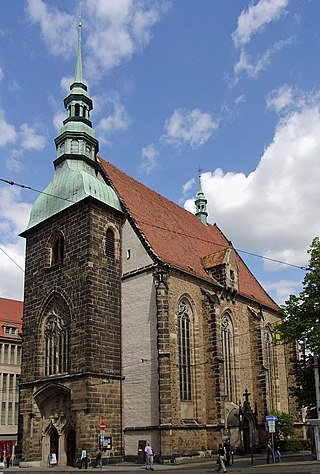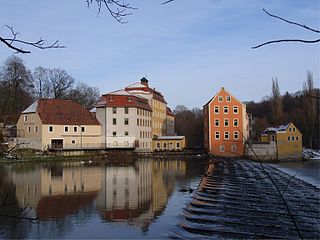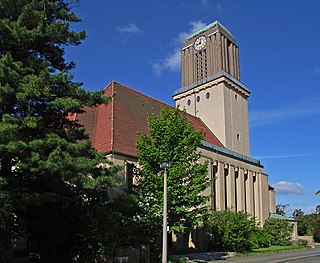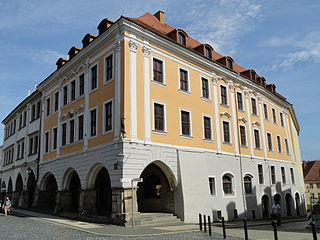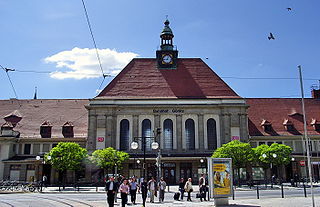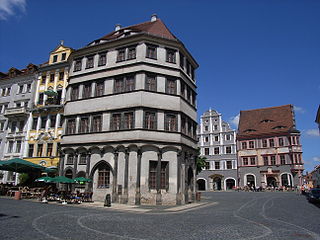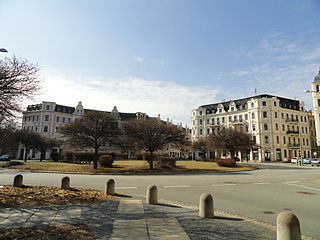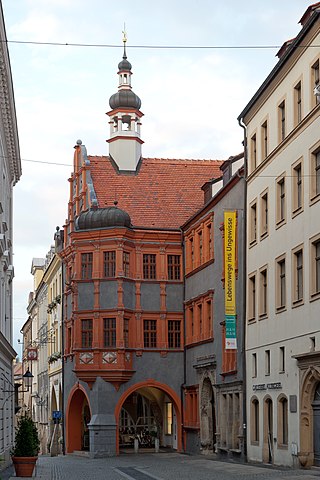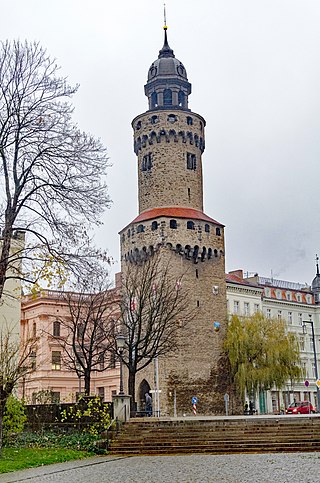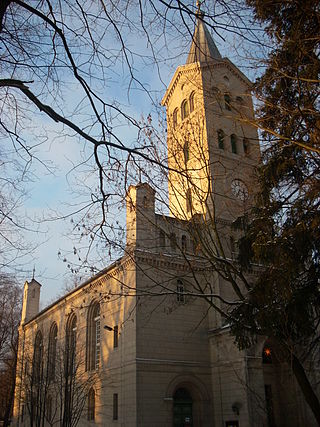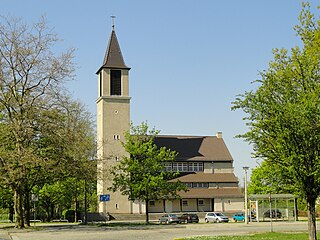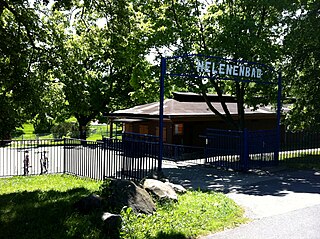37 Sights in Görlitz, Germany (with Map and Images)
Legend
Explore interesting sights in Görlitz, Germany. Click on a marker on the map to view details about it. Underneath is an overview of the sights with images. A total of 37 sights are available in Görlitz, Germany.
Sightseeing Tours in Görlitz1. Cultural Centre Synagogue of Goerlitz
The Görlitz Synagogue in Görlitz, Germany was built between 1909 and 1911 in the Art Nouveau style and was the main place of worship for the city's Jewish community. Despite an arson attack, the synagogue was one of the few synagogues in the area to survive Kristallnacht, sustaining only minor damage. The damage could have been greater, but was lessened because the firefighters ignored the orders to let the synagogue burn. With the city's Jewish population depleted, the unused synagogue became a ruin in the following decades. In 1991, a restoration project began which was completed in December 2020. Owing to the COVID-19 pandemic, the opening ceremony was postponed until 2021. The synagogue duly opened on July 12, 2021. On September 12, 2022, a new Magen David was placed on top of the synagogue.
Wikipedia: Görlitz Synagogue (EN), Website, Heritage Website
2. The Holy Sepulchre
The Holy Sepulchre in Görlitz, also known as Görlitz Jerusalem, was created as a religious synthesis of the arts, extending from the crypt of the Church of St. Peter and Paul across the city to the Holy Sepulchre. It is one of the most important sights of the city. The Holy Sepulchre Chapel in the city on the River Neisse, which became the model for many comparable structures due to its early construction, is a scaled-down copy of the Jerusalem original from the High Middle Ages, the accuracy of which has not been matched by any other replica of the Holy Sepulchre in Germany. It was deliberately integrated into the landscape. The original Holy Sepulchre in Jerusalem was viewed by the later mayor Georg Emmerich and Agnete Fingerin when they undertook a pilgrimage to the Holy Land.
3. Weinberghaus
The Weinberghaus is a Swiss-style wooden building on the slope of the vineyard in Görlitz's Südstadt. The vineyard house was used as an excursion restaurant until the mid-1980s and has been closed since then. Right next to the house is the vineyard tower – an observation tower, also made of wood. The tower has been renovated and can be climbed. From the uppermost of the two walkways, there is a view from the Neisse floodplains in the east over the Weinlache, the Volksbad area, the Weinhübel district and the Berzdorfer See in the south to the Landeskrone in the west. The ensemble of buildings is located on the property An der Landskronbrauerei 902 at the southern end of the street.
4. Biblisches Haus
The Biblical House is a town house in the old town of Görlitz. The house got its nickname because of its reliefs on the façade on the first and second floors. They depict scenes from the Old and New Testaments. It is located on the Neißstraße, the connection between Untermarkt and the Old Town Bridge over the Lusatian Neisse and, along with the Schönhof, is one of the most famous Renaissance buildings in the city. In its neighbouring building to the west – the baroque corner house at Neißstraße 30 – is the Görlitz Museum of Cultural History.
5. Obermarkt
The Upper Market Square in Görlitz is the largest square in the historic part of the town. It was laid out in 1250 together with the Lower Market Square. Both are connected via the Bretheren Street (Brüderstraße). While the Lower Market is mostly bordered by Renaissance buildings, the Upper Market has many buildings from the Baroque and Wilhelminian periods. It is therefore the gateway to the historic part of the town. Important buildings on the market include Reichenbach Tower, Kaisertrutz and Holy Trinity Church (Dreifaltigkeitskirche).
6. Heilig-Geist-Kirche
The Church of the Holy Spirit is a church building built between 1905 and 1906 by the Old Lutheran parish in Görlitz, Upper Lusatia. Today, the congregation belongs to the church district of Lusatia in the Independent Evangelical Lutheran Church. The church is located on Sattigplatz at the junction of Zittauer Straße / An der Jakobuskirche. It is the parish church of the Old Lutheran parish of Görlitz and is a listed building. The parish office is located in the house Carl-von-Ossietzky-Straße 31.
Wikipedia: Heilig-Geist-Kirche (Görlitz) (DE), Website, Heritage Website
7. Senckenberg Museum für Naturkunde Görlitz
The Museum of Natural History in Görlitz, Germany is a natural history museum with focus on zoology, botany and geology. Since 2009, the museum has been part of the Senckenberg Gesellschaft für Naturforschung with headquarters in Frankfurt/Main. The main field of research is soil biology. In the years 2006 to 2017 the number of visitors was between 25,000 and 34,000, in the year of the 3rd Saxon State Exhibition 2011 it was even 47,000.
8. Landskron Brau-Manufaktur
Landskron Brau-Manufaktur Görlitz Dr. Lohbeck GmbH & Co. KG is a brewery in Görlitz that employs 70 people. It goes back to the Görlitzer Aktien-Brauerei, founded in 1869, and with some buildings still in operation today, it is one of the oldest manufacturing industrial monuments in Germany. The beer matures in 12-metre-deep cellars for 40 days, longer than usual. These fermentation rooms from 1869 are listed as historical monuments.
Wikipedia: Landskron Brau-Manufaktur (DE), Website, Heritage Website
9. Wilhelmsplatz
The rectangular Wilhelmsplatz in the southern city centre is the largest town square in Görlitz with an east-west extension of over 200 m and a north-south spread of around 100 m. The middle of the square is a large lawn framed by flower beds as planting bands. A row of hedges and trees separates the green square from the busy Jakobstraße in the west. Wilhelmsplatz is located between the city centre and Görlitz train station.
10. Annenkapelle
St. Anne's Chapel on Görlitz's Marienplatz was built between 1508 and 1511 by the council architect Albrecht Stieglitzer as a memorial chapel for the Görlitz merchant Hans Frenzel the Rich (1463–1526). It was dedicated to St. Anne, the patron saint of Frenceslas. Later it was used as an orphanage and penitentiary church. Today, the former chapel is used as a gymnasium and auditorium for the adjacent St. Anne's School.
11. Joliot-Curie-Gymnasium
The Joliot Curie-Gymnasium is a general education school in the secondary education area, which leads to university entrance qualification. The school, which emerged from the Luisenschule, is located on the north side of the Wilhelmsplatz in the eastern Saxon city of Görlitz. It is one of two high schools in the city and is in its sponsorship. The high school offers the natural and social science profile.
12. Frauenturm (Dicker Turm)
The Thick Tower erected in 1250 is part of the historic fortification of Görlitz. The 46-metre (151 ft) tall tower is the most massive tower in the city. Its walls in the lower part reach a thickness of 5.34 metres (17.5 ft), thus the name of a thick tower. Apart from it, the Nikolai Tower and the Reichenbach Tower are still preserved. In total, Görlitz had four large watchtowers and defense towers.
13. Girl with the Shell
The Muschelminna, also known as the Toberentz Fountain after its architect Robert Toberentz, is a fountain built in 1887 on the Postplatz in the city of Görlitz. The name originated from the vernacular, which referred to the bronze statue standing on the marble pedestal. The statue was melted down during World War II. Since 1994, a faithful replica has been on display on the fountain.
14. Rathaustreppe
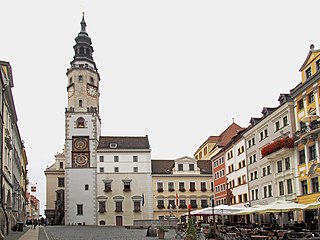
The town hall of the city of Görlitz has been a place of urban administration, power and jurisdiction since about 1350; In 1369 it was first documented as a town hall by a certificate from the Görlitz Council. Its magnificent interior decreases into the Renaissance period. It consists of several coherent buildings on the Untermarkt 6–8 and is now the seat of several offices.
15. Stadthalle Görlitz
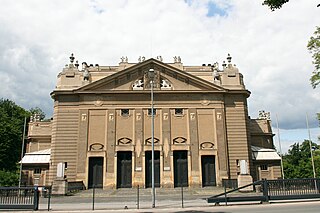
The Stadthalle is a concert hall in Görlitz, Germany. From its opening in 1910 until its closure in 2005, the building has been used for numerous different cultural events, including concerts, sporting events and trade fairs. A planned renovation was abandoned in 2012. The Förderverein Stadthalle Görlitz e.V. is committed to the preservation of the cultural monument.
16. Hoffnungskirche
The Church of Hoffungen is an Protestant church building in Görlitz-Königshaufen. It was rebuilt in 1998 as a reconstruction of the village church of German-ossig with the original ceiling paintings and the baroque interior. The parish belongs to the Silesian district of Silesian Upper Lusatia of the Evangelical Church in Berlin-Brandenburg-Silesian Upper Lusatia.
17. Frenzelhof
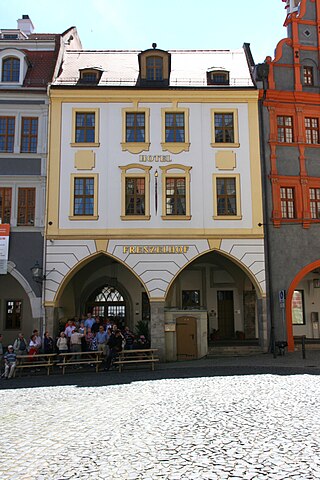
The Hallenhaus Untermarkt 5 is a protected cultural monument located opposite the town hall on the Untermarkt in Görlitz. Built in the 15th century, the Frenzelhof is one of the oldest hall houses in Görlitz. For the construction phase around 1500, there are a number of historical references that are associated with the name Hans Frenzel.
18. Brüderstraße
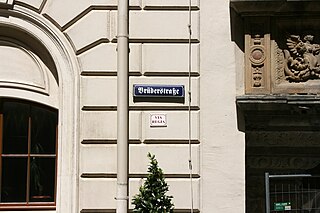
The Brüderstraße in Görlitz is part of the historic city centre and has numerous buildings from the Renaissance. It connects the Görlitz Obermarkt with the Untermarkt and is part of the Via regia. It is named after the Franciscan friars, to whose former monastery on the Obermarkt the Brüdergasse led.
19. Dreifaltigkeitskirche
The Trinity Church is a Protestant church in Görlitz, Germany. It was built between 1234 and 1245 as the monastery church of the Franciscan monastery on today's Obermarkt. In 1564 the monastery was converted into a grammar school, the church served as a school church and since 1712 as a parochial church.
Wikipedia: Dreifaltigkeitskirche (Görlitz) (DE), Website, Heritage Website
20. Church of Our Lady
The Frauenkirche is a three -aisled hall church in the late Gothic style. The church was once at the gates of the city of Görlitz. However, it is now in the middle of the center and shapes the image of the city center. In autumn 1989 she was the starting point of the prayers of peace in the city.
21. Bismarcksäule
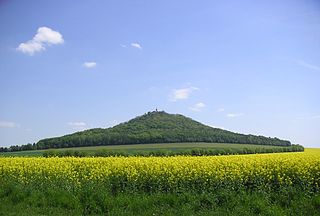
The Landeskrone is the local mountain of the city of Görlitz in eastern Upper Lusatia. With an altitude of 420 m above sea level, it is located southwest of the city centre and is an excursion destination with a view of Görlitz and the surrounding area as well as the Jizera and Giant Mountains.
22. Kathedrale St. Jakobus
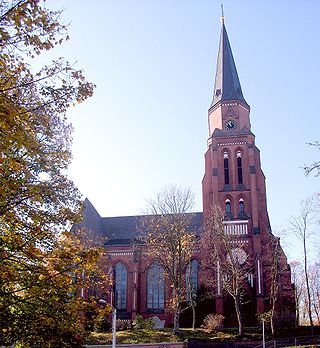
The cathedral of St. Jakobus in Görlitz, Germany, is the cathedral of the Roman Catholic Diocese of Görlitz, dedicated to St. James. It was built in neo-Gothic style and consecrated in 1900 as a parish church. It became a cathedral in 1994, due to the reorganisation of East German dioceses.
Wikipedia: St. Jakobus, Görlitz (EN), Website, Heritage Website
23. Obermühle
The Obermühle was one of the three large flour mills of the city of Görlitz on the Lusatian Neisse. The mill ceased operations in 1994, but parts of the buildings are still used as a restaurant and guesthouse today. The Obermühle is home to the easternmost beer brewery in Germany.
Wikipedia: Obermühle (Görlitz) (DE), Website, Heritage Website
24. Schlesisches Museum
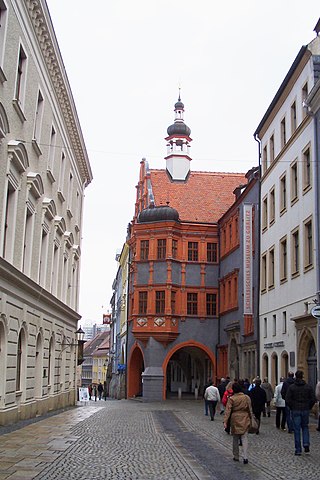
The Silesian Museum in Görlitz was opened on 13 May 2006 in an architecturally newly composed complex that combines four historic buildings: the Schönhof, the Mittelhaus, the building at the fish market, both of which date back to 1832, and the Hallenhaus at Untermarkt 4.
25. Kreuzkirche
The Kreuzkirche is an evangelical church building from the beginning of the 20th century on the edge of the Görlitz Südstadt between the Arndt and Reuterstrasse. The architect of the modern church building built between 1913 and 1919 was the Dresden Rudolf Bitzan.
Wikipedia: Kreuzkirche (Görlitz) (DE), Website, Heritage Website
26. Barockhaus
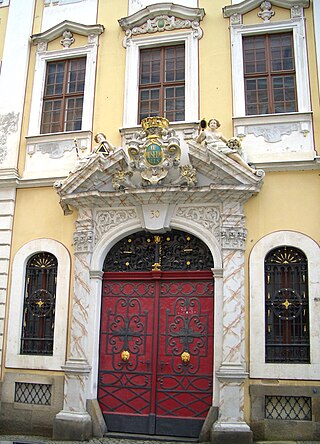
The Baroque House Neißstraße 30 is a major commercial and residential building of the Baroque period in Görlitz, which has been used since 1951 as part of the Municipal History Museum. It is located in the middle of the old town on Neißstraße 30.
27. Brauner Hirsch
The brown deer is a baroque community center in the city of Görlitz in Upper Lusatia. The corner house is located on the eastern side of the undermarket and on the Neißstraße, which continues towards the Altstadtbrücke over the Lausitzer Neisse.
28. Bahnhof Görlitz
Görlitz station is the central station of the city of Görlitz in the German state of Saxony. Of the original twelve station tracks only six are still in operation. Görlitz is also served by stations in Rauschwalde, Weinhübel and Hagenwerder.
29. Waage
The Waage is a Renaissance house in the town of Görlitz in eastern Upper Lusatia. It is located on the Untermarkt and is part of the so-called row in the middle of the square. The scale structurally completes the row on the southeastern side.
30. Brautwiesenplatz
Brautwiesenplatz is the central square in the western part of Görlitz, Saxony, Germany. The circular square with a grass roundabout in the middle was laid out in 1899 as Germany's first roundabout; six streets radiate off from it.
31. Schönhof
The Schönhof is the oldest Renaissance-building in Görlitz, Germany. The building on Bretheren Street 8 (Brüderstraße) was constructed by Wendel Roskopf in 1526 over the surviving stone foundations after the town fire in 1525.
32. Reichenbach Tower
The Reichenbach Tower probably built in the 13th century and first mentioned in 1376 is the western part of the historic fortification of Görlitz. With a height of 51m it is the tallest of the three fortified towers in Görlitz..
33. Erlöserkirche
The Redeemer Church is an evangelical church building in the Kunnerwitz district of Görlitz. The church was built at the end of the 1830s and is located together with the adjacent cemetery at the western end of the village.
34. Görlitzer Warenhaus
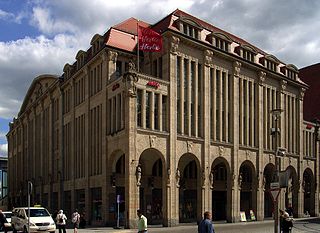
The Görlitz department store, also known as Zum Strauss and Görlitz department store, is a listed building in Görlitz, Germany, which was built in the style of historicism and decorated with elements of Art Nouveau.
35. Ochsenbastei
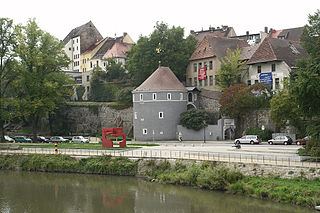
The Ochsenbastei in Görlitz is part of the former city fortifications near St. Peter's Church. While the actual "Tor an der Kahle" was demolished in 1834, the rotunda of the bastion and the ox kennel were preserved.
36. Christuskirche
The Christuskirche is a Protestant church building in the Görlitz district of Rauschwalde. The church was built at the end of the 1930s and is located to the southwest, slightly set back on Diesterwegplatz.
37. Helenenbad
The Helenenbad was an open-air swimming pool in the northwest of Görlitz's city centre. Today, the sunbathing lawns and play facilities on the grounds of the former bath are used as an air bath and park.
Share
Disclaimer Please be aware of your surroundings and do not enter private property. We are not liable for any damages that occur during the tours.
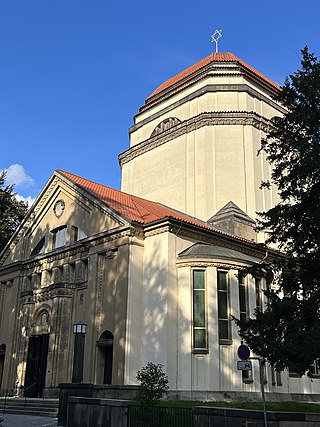
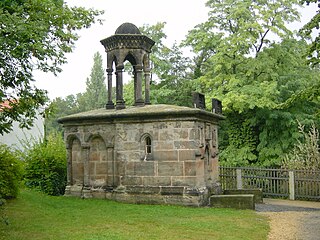
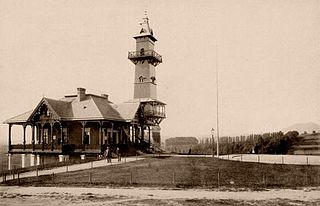
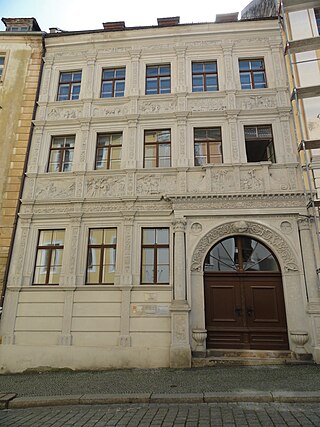
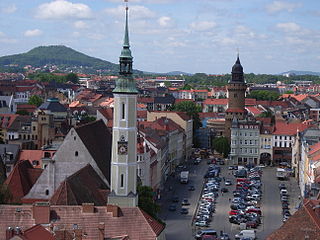
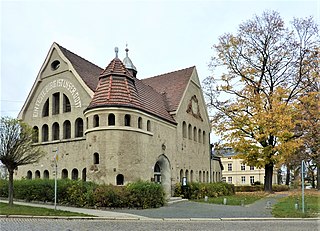
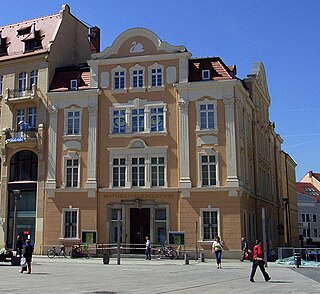
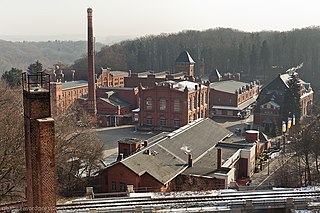
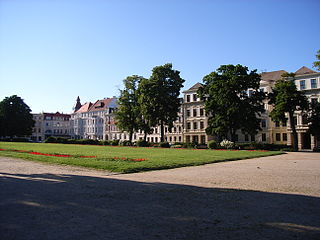
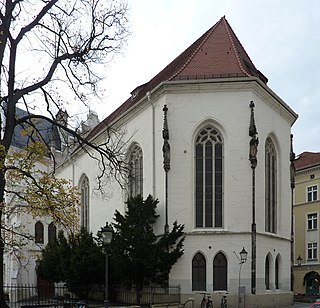
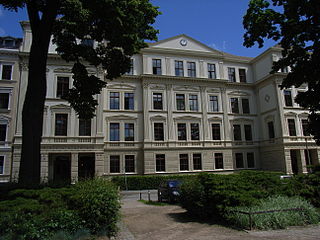
.jpg)
